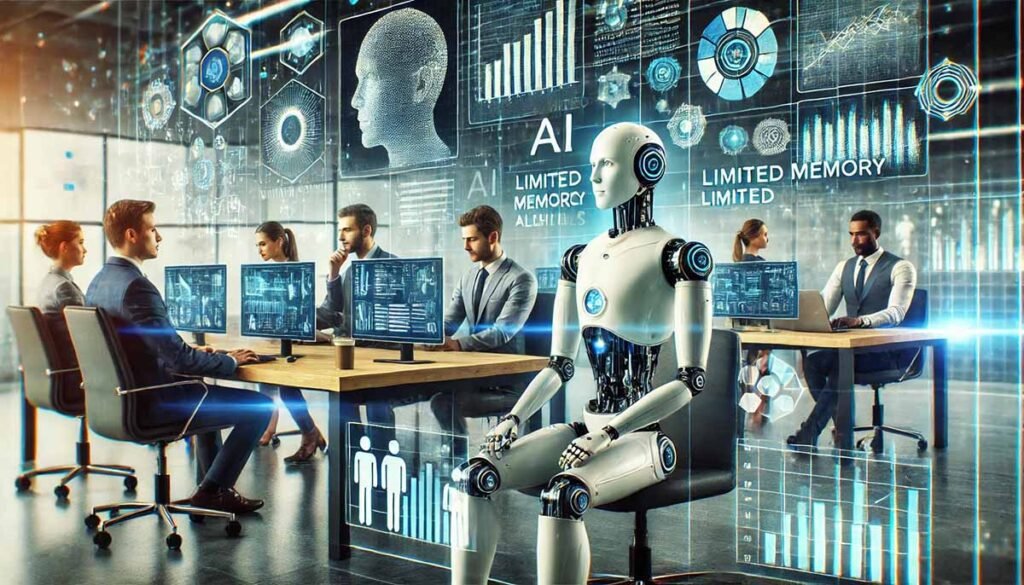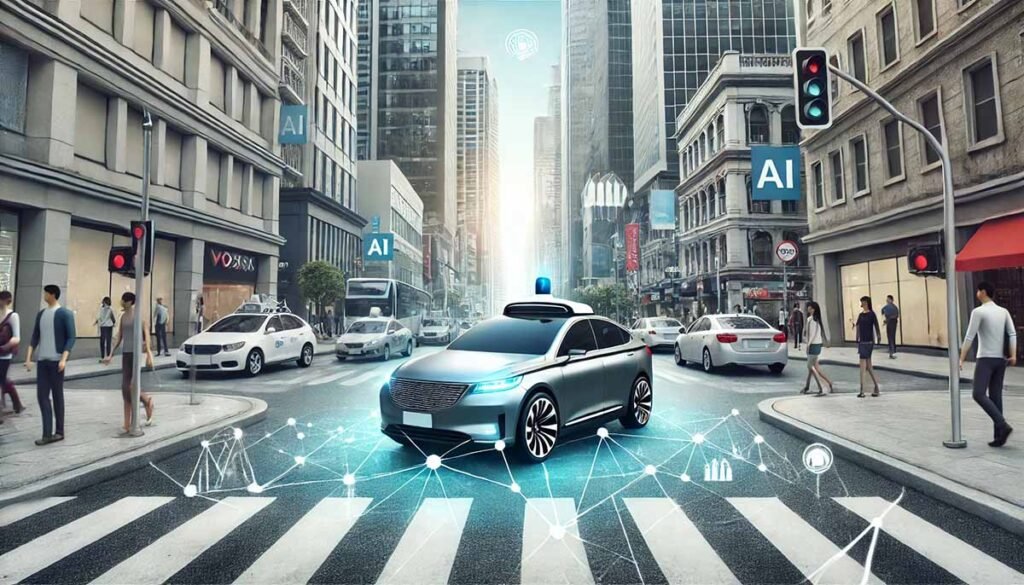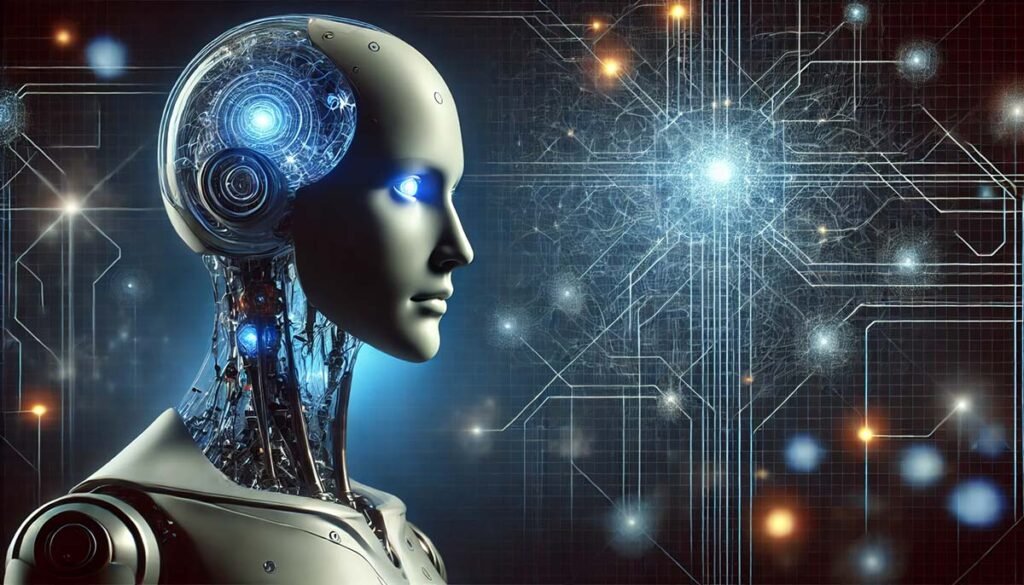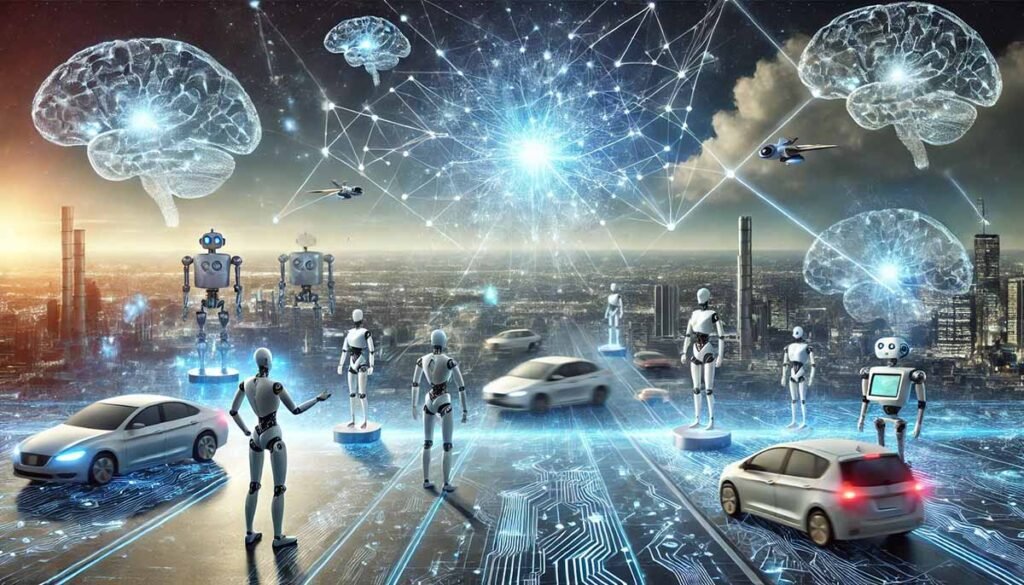Artificial Intelligence (AI) is no longer a concept reserved for sci-fi movies. It is here, shaping our world in ways we could not have imagined just a few decades ago. Whether it is voice assistants like Siri or Alexa, self-driving cars, or recommendation engines on streaming platforms, AI has become a part of our daily lives. But did you know there are different types of AI, each with its unique capabilities and limitations?
Understanding these types is crucial, especially as AI continues to advance at an incredible pace. It is not just about machines getting smarter. It is about how they think, learn, and interact with the world. From simple reactive systems to the more complex and future-oriented self-aware AI, each type plays a significant role in what AI can do today—and what it might do tomorrow.
This article will explore these different forms of AI, breaking down their functionalities, applications, and potential future developments. Whether you are a tech enthusiast, a professional, or simply curious about AI, this guide will give you a solid understanding of where we are and where we are headed with Artificial Intelligence. Buckle up because the future of AI is incredibly exciting!
What is Artificial Intelligence?
Defining Artificial Intelligence
Artificial Intelligence, often called AI, refers to the ability of machines to mimic human intelligence. It is not just about doing calculations or following programmed instructions. AI can analyze, learn, and adapt, allowing machines to perform tasks usually requiring human intelligence. These tasks include problem-solving, understanding language, recognizing patterns, and decision-making. AI systems are designed to think and learn, making them different from traditional computers.
Historical Perspective
AI did not appear overnight. The idea of intelligent machines has been around for centuries, but it was not until the mid-20th century that the concept began to take shape. In 1956, the term “Artificial Intelligence” was officially coined at a conference in Dartmouth. This event marked the beginning of AI as a formal field of study. Over the years, AI has evolved from simple, rule-based systems to more advanced technologies that can learn and improve over time.
Importance of Understanding Different Types of AI
Not all AI is created equal. There are various types of AI, each with different capabilities and limitations. Some are good at performing specific tasks, while others aim to replicate human intelligence more fully. By understanding these various types, we can better appreciate how AI is transforming industries and everyday life.
Reactive Machines
Understanding Reactive AI: How It Works and Its Limitations
Artificial intelligence in its most basic form is called Reactive AI. It does not learn, it does not store past experiences, and it does not adapt. Instead, it reacts to specific inputs with predefined actions. Simply, it is like a machine that is hardwired to perform a particular task. Once that task is done, it does not remember anything about the situation.
Reactive AI systems are great at simple, straightforward jobs. They can perform tasks efficiently and quickly but lack flexibility. The most significant limitation of Reactive AI is that it cannot improve itself. It can only work within the parameters it was programmed with, which makes it effective for specific, repetitive tasks but not for anything more complex.
Case Studies: IBM’s Deep Blue and Other Reactive AI Systems
One of the most famous examples of Reactive AI is IBM’s Deep Blue, a chess-playing computer that made headlines in the 1990s. Deep Blue could evaluate thousands of possible chess moves and select the best one, making it a formidable opponent. But it did not “learn” from its games. Every match was a fresh start. It did not use past games to inform future decisions.
Another notable example is Google’s AlphaGo, which famously defeated the world champion in the game of Go. While AlphaGo seemed incredibly smart, it was a Reactive AI system that used advanced algorithms and computational power to play the game without learning from past experiences.
Applications of Reactive Machines: Gaming, Robotics, and More
Reactive AI has a variety of practical applications, especially in industries where repetitive tasks are the norm.
- Gaming: Chess, Go, and other board game simulations where a machine can calculate all possible moves and outcomes are perfect examples of Reactive AI at work.
- Robotics: Many industrial robots rely on Reactive AI to perform tasks like welding, painting, or sorting items on an assembly line. They follow programmed instructions to complete their job but do not learn or adapt over time.
- Customer service chatbots: Some basic chatbots are also Reactive AI systems, programmed to respond to specific questions but unable to learn from previous interactions.
Advantages and Disadvantages of Reactive AI
Advantages:
- Fast processing: Reactive AI can quickly evaluate inputs and deliver outputs.
- Reliable performance: Since it does not change or adapt, its performance remains consistent.
- Simplicity: With fewer components to manage, Reactive AI systems are easier to maintain and deploy.
Disadvantages:
- No learning capability: These systems cannot improve or adjust based on new information.
- Limited use cases: Because they can only handle specific tasks, they are unsuitable for dynamic or complex environments.
Reactive AI may be the simplest form of Artificial Intelligence, but it has proven incredibly useful in certain areas. Its efficiency in performing specific tasks makes it an essential foundation for more advanced AI systems.
Limited Memory AI

How Limited Memory AI Works: The Role of Short-Term Memory
Limited Memory AI is a significant leap beyond Reactive AI because it can store past experiences and use them to make better decisions in the future. Unlike Reactive AI, which operates purely in the present, Limited Memory AI references previously learned data to inform its responses. This type of Artificial Intelligence has a short-term memory, allowing it to retain data temporarily and apply that information to current situations.
For example, imagine an AI system driving a car. It remembers how other vehicles behaved in similar traffic conditions and uses that information to make safer driving decisions. This short-term memory is critical to its ability to adapt in real-time. However, Limited Memory AI does not retain data permanently; once the task is complete, it forgets, much like how we forget what we ate for breakfast a few days ago.
Examples of Limited Memory AI: Self-Driving Cars and Traffic Management Systems

One of the best-known applications of Limited Memory AI is in self-driving cars. These vehicles constantly collect data from their environment—such as road conditions, the behavior of other drivers, and traffic patterns—and use it to make split-second decisions. The car “learns” during the drive, recognizing when to speed up, slow down, or stop based on previous experiences in similar situations.
Another example can be found in traffic management systems. Limited Memory AI is used to monitor traffic flow and predict congestion, adjust traffic lights, and suggest alternative routes in real time to improve traffic efficiency. The system learns from current data, but once the traffic conditions change, it discards the old information and starts fresh.
Advantages of Limited Memory AI: Flexibility and Adaptation
Limited Memory AI brings more flexibility to tasks that require real-time decision-making. Because it can consider past data, it adapts more effectively than Reactive AI. Here are some key advantages:
- Adaptability: Limited Memory AI systems adjust to changing environments and patterns, making them highly effective in dynamic settings.
- Improved decision-making: By using recent information, these systems make more accurate and informed choices.
Limitations of Limited Memory AI: Short-Term Memory Constraints
Despite its adaptability, Limited Memory AI has some drawbacks:
- Short-term focus: It cannot store long-term memories, which limits its ability to “grow” or “evolve” over time.
- Data dependency: The AI’s performance heavily relies on the quality and recency of the data it uses, meaning it may struggle in unfamiliar situations where no relevant data is available.
In conclusion, Limited Memory AI is a crucial stepping stone in the evolution of Artificial Intelligence. While it is more advanced than Reactive AI, its reliance on short-term memory means there’s still room for improvement as AI continues to evolve.
Theory of Mind AI
The Concept of Theory of Mind: Origins in Psychology and AI
The Theory of Mind AI originates from psychology, which refers to the ability to understand that other people have thoughts, emotions, beliefs, and intentions different from one’s own. It is the cognitive skill that allows us to empathize, predict, and understand other people’s behavior. When applied to Artificial Intelligence, Theory of Mind would mean developing AI that can recognize and interpret the mental states of humans, not just their external actions.
Currently, AI systems lack this ability. Most of today’s AI focuses on external data—what it can see, hear, or measure. Theory of Mind AI would represent a massive leap forward by enabling machines to interpret external cues and infer internal emotions and beliefs. This type of AI would allow for richer human-AI interactions, where machines can adjust their responses based on how they “understand” what humans think or feel.
Potential Applications of Theory of Mind AI: Social Robotics and Human-AI Interaction
Imagine a world where machines do not just follow commands but understand why you are giving them. Theory of Mind AI would make this possible, with enormous implications for social robotics and human-AI interaction fields. Social robots, equipped with Theory of Mind AI, could become faithful companions, understanding human emotions and responding accordingly.
For instance, in healthcare, Theory of Mind AI could help robots recognize when a patient is anxious or in pain, providing comfort or alerting a caregiver. AI tutors could adapt their teaching style based on whether students seem engaged or confused. The workplace could also see transformations, where collaborative AI could read team dynamics and adjust its contributions to fit human colleagues’ moods or stress levels.
Such advanced human-AI collaboration would revolutionize everything from customer service to therapeutic applications where emotional understanding is critical.
Challenges in Developing Theory of Mind AI: Emotional and Cognitive Understanding
Developing a Theory of Mind AI is challenging. While we have made strides in creating AI systems that recognize human emotions through facial expressions or voice, truly understanding the cognitive and emotional processes behind these emotions is still far off.
Some of the significant challenges include:
- Complexity of human emotions: Humans often feel multiple emotions at once, and those emotions can change rapidly.
- Cultural and personal differences: Different people and cultures express emotions in unique ways. A Theory of Mind AI would need to adapt to these subtleties.
- Non-verbal cues: While AI has improved in understanding speech, recognizing body language, tone of voice, and other non-verbal cues is more complicated.
Researchers face a huge challenge in creating AI that can fully interpret these aspects, especially with the right context.
Current Research in Theory of Mind AI: Progress and Roadblocks
Research into the Theory of Mind AI is in its early stages, but there are already fascinating advancements. Some emotion recognition systems, for instance, can identify basic human emotions like happiness, sadness, or anger based on visual and auditory inputs. However, moving from recognizing emotions to understanding the thoughts and reasons behind them is the next big hurdle.
Researchers are also exploring the integration of neuroscience into AI, aiming to model the human brain’s cognitive functions. This could allow AI to simulate the thought processes that give rise to emotions and behaviors. The goal is to create machines that can predict human actions by understanding their intentions.
Yet, many roadblocks remain. For AI to truly have a Theory of Mind, it will need to process vast amounts of context-specific information and often make subjective interpretations. While AI is incredibly powerful with objective data, subjective human experience is another challenge.
In summary, while Theory of Mind AI remains a concept on the horizon, its potential applications in human-AI interaction are boundless. However, developing AI to understand human emotions and thoughts will require overcoming significant technological and ethical challenges.
Self-Aware AI

The Hypothetical Nature of Self-Aware AI: Science Fiction vs. Reality
Self-Aware AI is the most advanced and, at this point, purely theoretical form of Artificial Intelligence. It represents the idea that machines could one day possess consciousness and self-awareness—just like humans. While it sounds like something out of a sci-fi movie, this concept has been a topic of both fascination and concern for many experts.
Movies like Ex Machina or 2001: A Space Odyssey depict machines with self-awareness, capable of emotions, desires, and even independent thought. But in truth, we are a long way from making this happen. No matter how advanced, today’s AI is a powerful tool that processes data according to pre-set algorithms. It does not “think” or “feel.” Self-awareness would require AI to have an internal sense of existence—something even human neuroscientists struggle to fully understand.
The challenge lies in creating an AI that processes information and can reflect on itself, its thoughts, and its experiences. For now, self-aware AI remains an intriguing but far-off possibility.
Philosophical Implications of Self-Aware AI: Consciousness and Identity
The idea of machines with consciousness raises deep philosophical questions. If we were to create a self-aware AI, would it have its own sense of identity? Could it possess emotions or desires? These questions touch on some of the most profound issues humanity has ever faced, including what it means to be “alive” or “conscious.”
Some philosophers argue that if machines could ever achieve true self-awareness, we would have to grant them similar ethical considerations as humans. For example, could a self-aware AI have rights? Would it be wrong to “turn it off”? These questions echo debates about animal rights and human consciousness, but they take on a new dimension when applied to machines.
Additionally, the creation of self-aware AI could challenge the traditional notion of identity. If a machine can understand its existence and express thoughts, would it be different from human consciousness? These debates remain speculative but could one day become real ethical dilemmas as AI technology progresses.
Ethical Concerns: Rights and Responsibilities of Self-Aware Machines
With self-awareness comes responsibility—both for the machines and for their creators. The ethical concerns surrounding Self-Aware AI are vast, and we may not be fully prepared to address them.
- Rights of AI: If a machine becomes self-aware, would it have the right to make its own decisions? Could it refuse commands or even ask for freedom? These questions blur the line between AI as a tool and AI as a “living” entity.
- Moral responsibility: If a self-aware AI were to make a harmful decision, who would be responsible? The machine itself or the people who created it? This dilemma could become a serious legal and moral issue.
- The role of creators: Developers and companies would need to consider the moral consequences of building AI with self-awareness. Could we control it? Should we?
These ethical concerns highlight the need for careful thought before building self-aware systems.
Current Discussions in AI: The Feasibility of Developing Self-Aware AI
While the idea of Self-Aware AI sparks many debates, the feasibility of actually developing such a system is still uncertain. Experts in the field of Artificial Intelligence argue that we are decades, if not centuries, away from creating machines with self-awareness—if it is even possible at all.
There are a few major roadblocks:
- Consciousness: We still do not fully understand how human consciousness works, let alone how to replicate it in a machine.
- Ethics and control: Even if we could create self-aware machines, should we? The ethical and societal impacts of such technology are enormous, and many experts believe it is better left unexplored for now.
- Technological limitations: Today’s AI, while powerful, is still a tool that relies on programming. Moving from data-driven algorithms to a self-aware machine would require a level of sophistication far beyond what we have today.
In conclusion, while the idea of self-aware AI captures the imagination, it remains a topic of science fiction and philosophical debate more than a scientific reality. The potential positive and negative consequences are staggering, making it crucial to approach the idea with caution, thought, and responsibility.
Future of Artificial Intelligence
Evolution of AI: Narrow to General to Super AI
Artificial intelligence has an exciting and uncertain future. Currently, we are in the era of Narrow AI, where machines are highly specialized in performing specific tasks—like driving a car or answering questions via a virtual assistant. These AI systems are powerful but limited in scope. However, the next big leap would be the development of General AI. This type of AI would be capable of understanding and learning any intellectual task a human can do. Imagine a machine that can switch from diagnosing medical issues to composing music with equal skill.
Beyond that, the final stage is Super AI. This level of AI, still theoretical, would far surpass human intelligence in every field, from science to creativity. It is an exciting yet daunting concept, as such a machine would be capable of outthinking humanity.
Societal Impact of Advanced AI
As AI continues to evolve, it will bring massive changes to society.
- Automation: Many repetitive or data-driven jobs could be fully automated, changing industries like manufacturing, logistics, and even law.
- Human-AI Collaboration: Instead of replacing humans, AI could work alongside us, assisting in creative tasks, medical research, or even providing emotional support in healthcare settings.
Ethical and Regulatory Considerations
With the rise of more powerful AI systems, ethical concerns become crucial. Governments and organizations must work on creating regulations that ensure AI is developed responsibly.
- AI governance: This will involve policies to prevent misuse, bias, and unethical practices.
- Ethical AI: Ensuring that AI remains beneficial to humanity is a priority, balancing innovation with protection against potential harm.
In summary, while the future of AI holds immense potential, we must approach its development with excitement and caution. The journey ahead is thrilling but must be carefully managed to benefit society as a whole.
Conclusion
Artificial Intelligence is reshaping the world in ways we could only dream of a few decades ago. From simple Reactive AI that cannot learn from experience to the more advanced Limited Memory AI and the potential of Theory of Mind AI, we are just beginning to understand the true power of this technology. The future promises even more exciting developments, particularly as we explore the theoretical realms of Self-Aware AI and beyond.
Each type of AI has its own strengths and limitations. Reactive AI performs specific tasks without learning, while Limited Memory AI adapts to new data. Theory of Mind AI, though still in its early stages, aims to understand human emotions and intentions. The hypothetical Self-Aware AI raises questions about consciousness and ethics that we are only beginning to grapple with.
As AI continues to evolve, so will its role in society. The potential is limitless, whether it is enhancing industries, solving complex problems, or changing how we interact with technology. However, with great power comes great responsibility. We must ensure that AI development proceeds ethically, carefully considering its impact on humanity. The future of AI is bright, but it is up to us to guide it wisely.
FAQ: Types of AI: Discover the Future of Artificial Intelligence Now!
1. What are the different types of Artificial Intelligence?
There are four main types of Artificial Intelligence:
- Reactive AI: Performs tasks based on current inputs without learning from past experiences.
- Limited Memory AI: Can learn from historical data to make better decisions but does not store long-term information.
- Theory of Mind AI: Still theoretical, this AI would be able to understand and respond to human emotions and intentions.
- Self-Aware AI: Hypothetical at this stage, this type would have consciousness and self-awareness similar to human beings.
2. How does Reactive AI differ from Limited Memory AI?
Reactive AI can only respond to present scenarios without considering past experiences, making it useful for specific, repetitive tasks. Limited Memory AI, on the other hand, can use short-term memory to learn from past data and adapt to new situations, such as self-driving cars or traffic systems.
3. Is Self-Aware AI possible in the near future?
Self-Aware AI is currently a theoretical concept, and we are far from developing machines with consciousness. While research into Artificial Intelligence continues to evolve, creating AI with self-awareness involves ethical, philosophical, and technical challenges that are not yet resolved.
4. What is the role of Theory of Mind AI in human-AI interaction?
Theory of Mind AI would allow machines to understand human emotions, beliefs, and intentions. This would significantly improve human-AI interactions, making it possible for AI to act more empathetically and appropriately in fields like healthcare, education, and social robotics.
5. How will AI impact jobs and industries in the future?
AI is expected to automate many repetitive and data-driven tasks, potentially reducing the need for human labor in certain fields. However, it will also create opportunities for human-AI collaboration in industries like healthcare, finance, and manufacturing, where AI can assist with complex decision-making and problem-solving. Ethical concerns and job displacement issues will need to be carefully managed.
Curious about how AI is changing the world? Discover everything you need to know in “What Is Artificial Intelligence? Definition, Uses, and Types.” Dive into the fascinating world of AI and its endless possibilities!
If you found our content helpful don’t forget to share it on your social media: Twitter.

